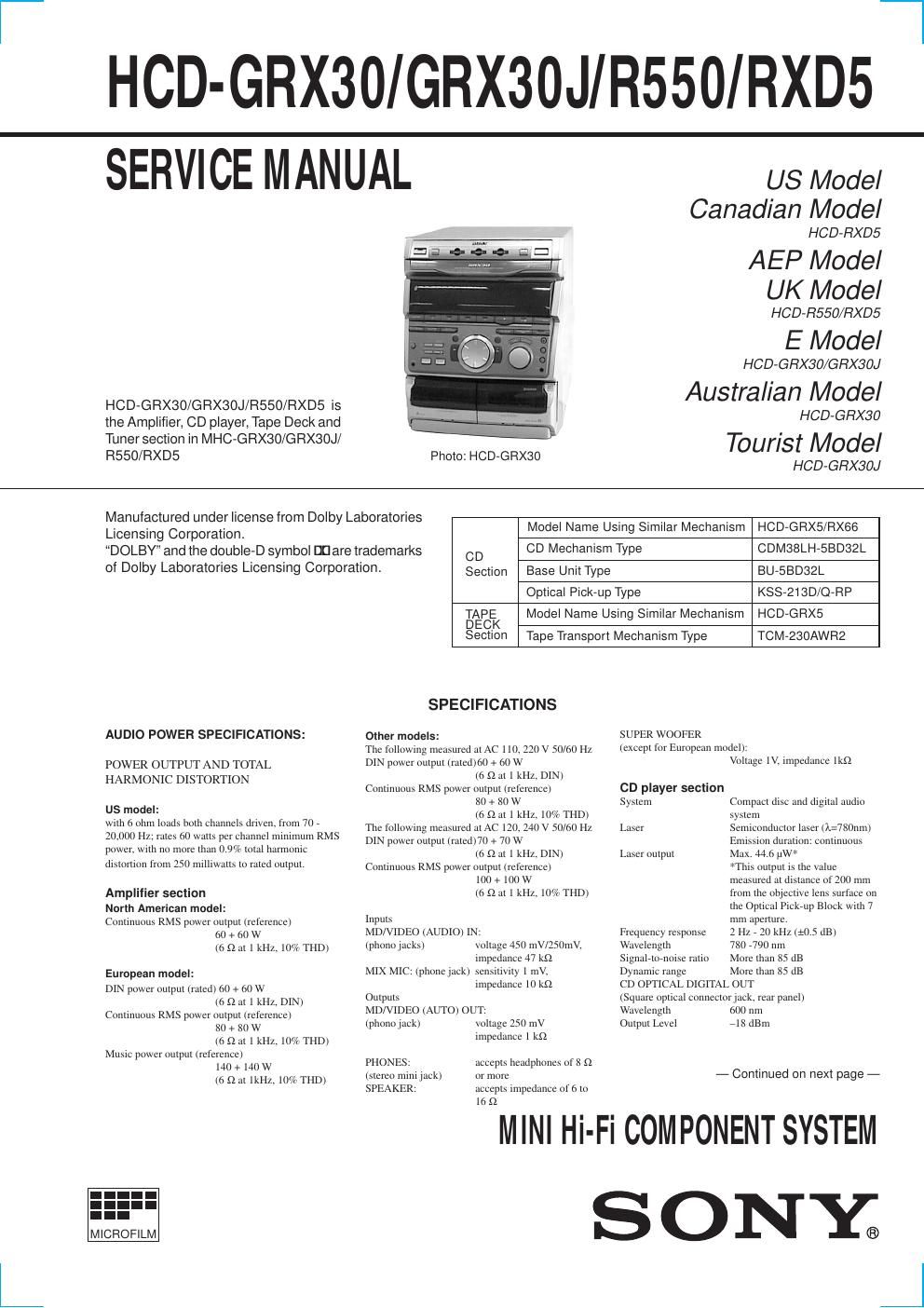Sony hcd grx 30 grx 30j r550 rxd5
This is the 68 pages manual for sony hcd grx 30 grx 30j r550 rxd5.
Read or download the pdf for free. If you want to contribute, please upload pdfs to audioservicemanuals.wetransfer.com.
Page: 1 / 68
